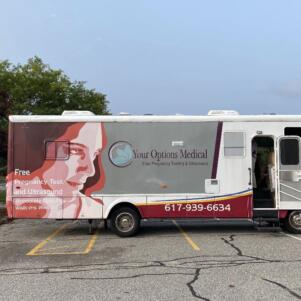Why Are Tuesdays Big Opioid Overdose Days on Cape Cod?
By James P. Freeman | October 12, 2017, 5:53 EDT
 Scene from 2015 HBO film, ‘Heroin: Cape Cod, USA’
Scene from 2015 HBO film, ‘Heroin: Cape Cod, USA’
The news this past August 22, a Tuesday, seemed promising. The Massachusetts Department of Public Health released its quarterly report showing a 5 percent decline in opioid-related deaths in the first half of 2017 compared with the same period last year (978 deaths, as opposed to 1,031 deaths; January to June). The statistics led The Boston Globe to conclude this was “the strongest indication to date that the state’s overdose crisis might have started to abate.”
But the news was a tantalizing chimera. The Barnstable police already knew. August was cruel.
With overwhelming preponderance and without overlooking prejudice, the opioid crisis still rages unabashed and unabated in Massachusetts. Especially on Cape Cod.
Figures provided by the Barnstable Police Department, the largest police force on the Cape, reveal a massive spike in opioid overdoses this past August compared with August 2016 (41 overdoses this year as opposed to 8 overdoses last year). Through the end of September, opioid-related overdoses in Barnstable, which at about 45,000 people is the largest town on the Cape, stood at 148. During the same period last year that number was 82. Overdoses for the combined two months of August and September (61) were the highest for back-to-back months since January and February 2015 (51), when the Barnstable police first began keeping opioid-specific records. That’s when things seemed really bad. In many ways, now they’re worse.
Except for May, every month this year in Barnstable has seen an increase in overdoses compared to corresponding months in 2016. Already, there have been more overdoses in just nine months of 2017 than during all of 2016. And if current trends continue — nothing suggests they won’t — this year will see more overdoses than in 2015, the year many thought was the high-water mark.
The death rate on the Cape isn’t encouraging, either. It is rising, not declining. Barnstable police report that 19 people have died due to overdose through October 10 of this year. In the same period, just nine people died through the end of October 2016. It is nearly certain that, beginning with respective Januarys, more lives will be lost by the end of October 2017 than were lost by October 2015 and October 2016, combined. This is progress in reverse.
Officer Eric W. Drifmeyer oversees the Research and Analysis Unit of the Barnstable Police Department. He is a busy man. Before 2015, the department, like many Massachusetts law enforcement agencies, did not have adequate reporting mechanisms to track and maintain useful information relating to opioid-specific activity. In the past, Drifmeyer says, any data collected were categorized as generic “medical events.” But as the opioid crisis escalated — it is estimated that 85 percent of crimes on Cape Cod are opiate-related — the need for more accurate crime data increased, too.
So Drifmeyer and his colleagues built their own database.
Data-driven information provides police with intelligence. With superior intelligence trends become apparent — such as populations at risk in an opioid crisis. Here, that means young adults who are prone to abusing opioids. In Barnstable — an area of 76 square miles comprising seven villages of affluence and affliction — overdoses in 2017 disproportionately affect white males ages 20-29 and 30-39, far more than any other demographic group. Barnstable police statistics show that men are overdosing at nearly twice the rate of women. And for females, white women ages 20-29 and 30-39 show the highest levels of overdose in 2017. These have been trend lines for years.
A superior database of historical information doesn’t just reveal trends. Consistent trends become accurate predictors of criminal activity. Drifmeyer notes that a spike in overdoses correlates directly with an immediate surge in crimes, such as shoplifting and car and house break-ins. Accordingly, proceeds from illicit sales of ill-gotten goods finance the next purchase of heroin and other opioids on the street. And the cycle repeats itself. From this learning curve emerges better policing — devising effective strategies, dispatching efficacious resources, and thwarting criminal behavior.
Every day on Cape Cod, in a sad ritual, somewhere, someone is rolling up a sleeve, readying an arm for a taut elastic rubber tourniquet, anticipating the needle chill about to puncture a warm vein for perhaps the last sensationally euphoric high.
Tap. Tap. Tap …
Naloxone, the powerful opioid antidote, popularly known as Narcan, reverses the effects of overdose. Its widespread and immediate administration by first responders on those suspected of overdosing is probably the reason the death rate has declined slightly this year in Massachusetts. Police in Barnstable have revived many people. Of the 148 officially designated overdoses this year, police have administered Narcan 46 times individually and another 25 times with assistance from a third party, such as a firefighter-emergency medical technician. In the short term Narcan saves lives. But Narcan solves nothing.
Stunningly, many addicts today have Narcan present while they are using, says Drifmeyer. Employing what one detective said was a “buddy system,” Narcan is administered by the corresponding partner in the event of overdose by the user. It is a bizarre insurance policy against a bad batch of drugs in this high-stakes risk/reward game; much heroin is now laced with the powerful additive fentanyl (itself a synthetic opiate), 50-100 times more powerful than morphine and 30-50 times more powerful than heroin itself. Today, Barnstable police cruisers are stocked with two 4-milligram doses of Narcan. Not long ago it was 2-milligram doses. Those lower doses were not effective at neutralizing higher concentrations of fentanyl increasingly found in heroin.
First responders are also at risk from exposure to just small quantities of fentanyl. It is so dangerous, in fact, that police and paramedics can effectively “accidently overdose” if they come into contact with only a bit of the drug. Today, Barnstable police dog units now carry Narcan because service dogs sometimes accidentally overdose, too, by inhaling fentanyl into their nasal passages or absorbing in into their paws while working a case. This unimaginable collateral damage is the newest alarming phenomenon in what President Donald Trump in August rightly called a “national emergency.”
Last decade, the most covered story in The Cape Cod Times, the largest paper on the Cape, was the controversial off-shore wind farm, known as “Cape Wind.” By the end of this decade, depressingly, the opioid matter will likely be the top story. Since 2000, nearly 400 people have died on the Cape and Islands due to some form of opioid overdose. With crashing regularity, stories appear on a near-daily basis, one falling into the other, like cascading dominoes.
Click. Click. Click …
In the last month, these stories received front-page treatment: October 7, “Construction Workers Hard Hit by Opioid Addiction”; October 4, “Study at McLean Hospital Reveals Marijuana’s Benefits in Lowering Opioid Usage”; September 22, “Judge: Drug Dealing Merits Homicide-Level Bail”; September 17, “Addiction Experts Warn of Detox Dangers”; and September 12, “Drop-In Night New Option for Drug Users.”
Obituaries in the paper are sad narratives of dying youth. They are all too frequent. Last year, 82 people on the Cape and Islands died because of opioid overdose. (Barnstable County ranked third statewide for fatal overdose rates in 2015 and 2016.) And all too often these announcements contain no cause of death, wrongly stating the deceased died “peacefully” or “quietly.” One was named Arianna Sheedy. She was 23 and a mother of two when she fatally overdosed on February 16, 2015, one of seven who died of similar causes on Cape Cod that month.
Sheedy was featured in the 2015 HBO film Heroin: Cape Cod, USA. The documentary portrays the day-to-day lives of eight young addicts. It is equally haunting and horrifying and must-viewing for anyone — everyone! — intent on understanding the mindset of people completely consumed emotionally, psychologically, and physically by this kind of addiction. (The film will be rebroadcast on HBO2 on Wednesday, October 18.) There are many memorable vignettes but one stands out. Opioid nirvana, one participant said, “felt like Christmas morning every time I shot up. Who wants to give that up?” Sheedy and another addict, Marissa, died before filming was finished. The film is dedicated to their memory.
Among the intriguing statistics in the Barnstable police database are 2017 overdoses by day-of-the-week. Surprisingly, Tuesdays rank second highest, only slightly below Fridays. As Drifmeyer dryly concedes, heroin “is not a recreational drug,” so weekdays are just as active as weekends. (Heroin is a retail business; perhaps even big deliveries slow on Sundays.) Still, why Tuesdays figure so prominently is puzzling to police. But as time and statistics accumulate, it is likely that mystery will be solved by their unsung and noble work.
Most of the heroin on Cape Cod arrives from Fall River and New Bedford, transported along the I-195 corridor, what is considered a local Heroin Highway. Every day, anonymous lives, hopes, and dreams travel that lonesome road. Until something desperately changes, they are slowly passing …
Gone. Gone. Gone.
James P. Freeman is a New England-based writer and former columnist with The Cape Cod Times. His work has also appeared in The Providence Journal, newenglanddiary.com a










